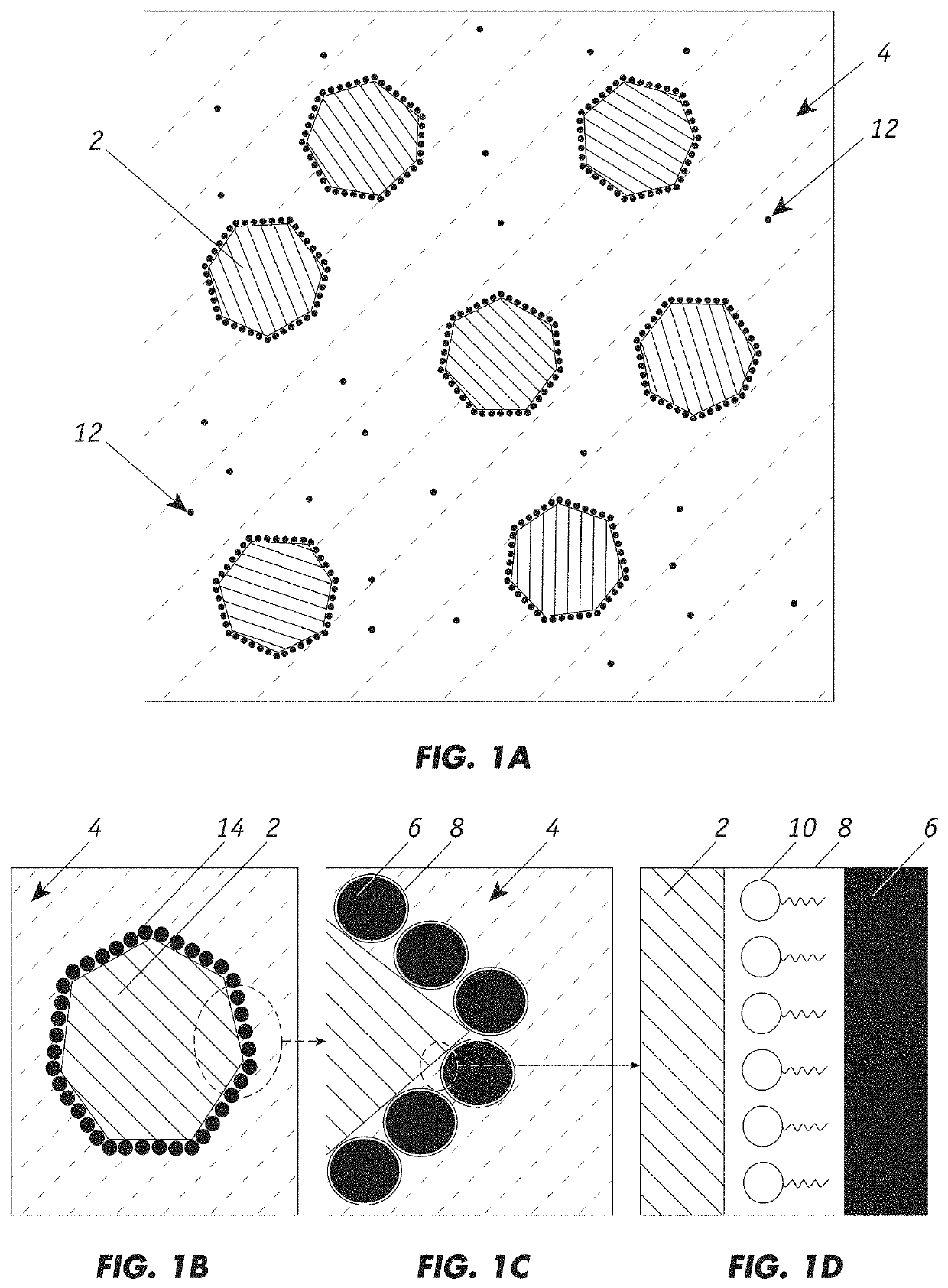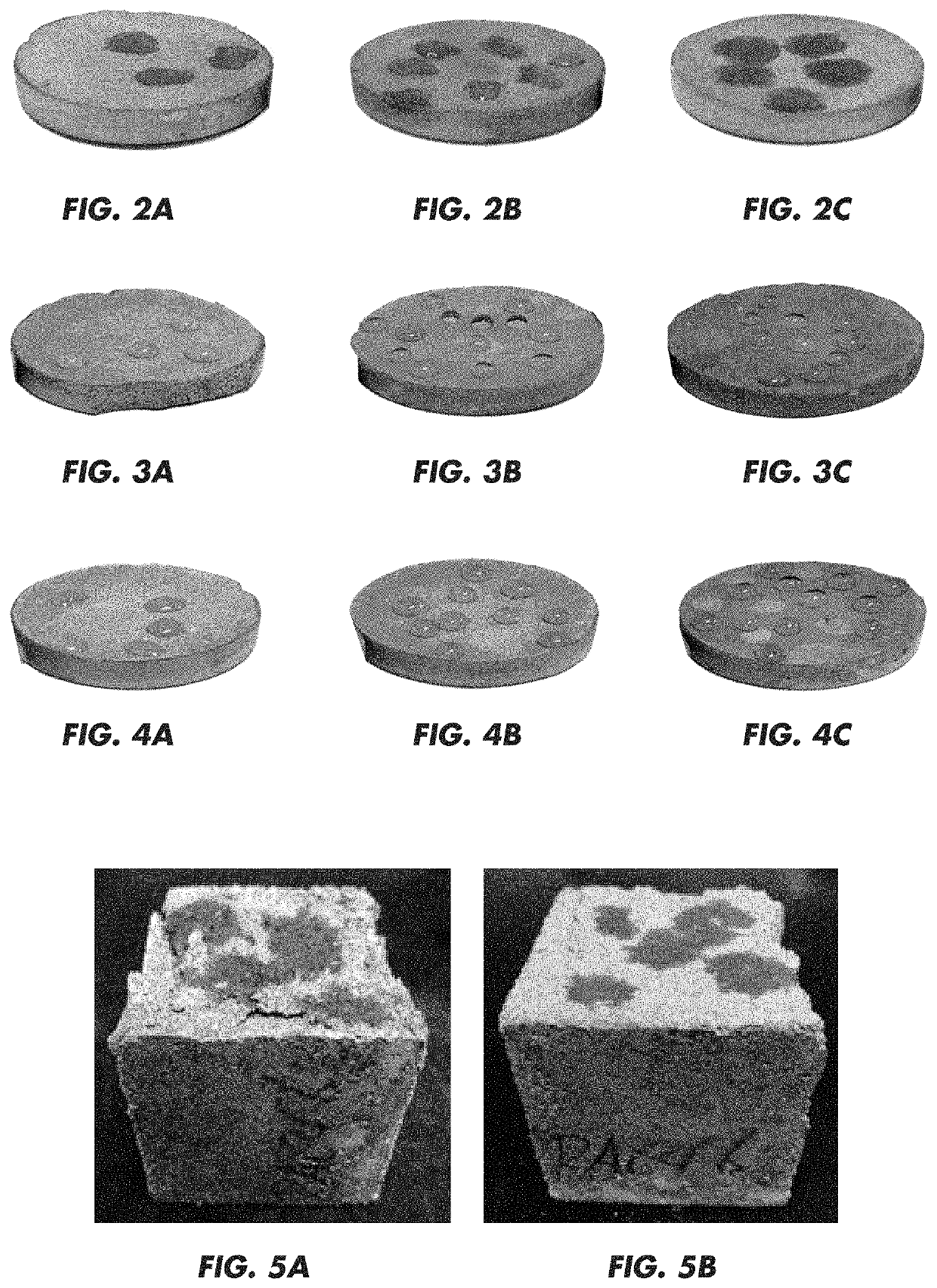Producing cementitious materials with improved hydrophobicity and strength using reclaimed waste substances
a technology of reclaimed waste substances and cementitious materials, which is applied in the direction of climate sustainability, solid waste management, sustainable waste treatment, etc., can solve the problems of reducing mechanical strength of hydrophobic cementitious mixtures produced, and achieves the effects of improving the surface property of carrier particles, increasing the mechanical strength of cementitious materials, and enhancing hydrophobicity without reducing strengths
- Summary
- Abstract
- Description
- Claims
- Application Information
AI Technical Summary
Benefits of technology
Problems solved by technology
Method used
Image
Examples
example 1
[0059]In this example, control mortar specimens were prepared without any additives. Their compressive strengths were measured after 7, 14 and 28 day of being cured. Test mortar specimens were prepared where the hydrophobic admixture replacement levels for silica sand were 4.5 and 6 wt % and their compressive strengths were also measured. Table 4 sets forth the components of the different hydrophobic admixtures used. The hydrophobic oil used was spent lubricant oil. The amount of oil listed is a blend includes both the lubricant oil and SPAN 20 surfactant. The SPAN 20 to lubricant oil ratio of the blend is in a weight ratio of 3:7.
[0060]
TABLE 4(1) Control mortar without additiveCompressive Strength (MPa)7 days14 days28 days26.78635.82939.019(2) Admixture replacement levels for silica sand were 4.5 wt %Composition of Admixture (wt %)Compressive Strength (MPa)ROAC7 days14 days28 days1000011.80613.55115.41290.919.09012.30515.58316.99266.6716.6716.6713.16714.9217.19146.1523.0830.7713.15...
example 2
[0062]In this example, test mortar specimens were prepared where the hydrophobic admixture replacement levels for silica sand was 4.5 wt % and their compressive strengths measured. Table 5 sets forth the components of the different hydrophobic admixtures used. The hydrophobic oil used was spent lubricant oil. The amount of oil listed is a blend that includes both the lubricant oil and SPAN 20 surfactant. The SPAN 20 to lubricant oil ratio of the blend is in a weight ratio of 3:7.
[0063]
TABLE 5(1) Control mortar without additiveCompressive Strength (MPa)7 days14 days28 days26.78635.82939.019(2) MRP replacement levels for silica sand were 4.5 wt %Composition of Admixture (wt %)Compressive Strength (MPa)ROAC7 days14 days28 days1000011.80613.55115.4128002026.05728.01433.9036004027.30133.53136.9175005029.94837.52342.24540060*5 29.95335.56643.66Composition of Admixture (wt %)Compressive Strength (MPa)ROAC7 days14 days28 days72.77.32013.02716.1618.18152.27.840*7 22.42527.93131.06641.78.350*...
example 3
[0065]The behavior of water droplets deposited on the surface of the mortar specimen is an indicator of the effectiveness of the hydrophobic admixtures. Water droplets were placed on the surfaces of some of the mortar specimens that exhibited good compressive strengths as described in Example 2. In particular, water droplets were applied to the mortar specimens designated by (*) in Table 5 and photographs of the specimens taken about 30 seconds after the water droplets were deposited.
[0066]FIGS. 5A and 5B are views of the mortar specimen wherein the hydrophobic admixture comprised 40 wt % crumb rubber particles, no lubricant oil, and 60 wt % activated carbon and no SPAN 20 surfactant. The water completely wets the surface and suggests that this admixture combination conferred no water repellency. As shown in FIG. 6, the mortar specimen with 35 wt % crumb rubber, 5 wt % oil, and 60 wt % activated carbon exhibited no significant improvement in the water repellency. However, improved w...
PUM
| Property | Measurement | Unit |
|---|---|---|
| contact angle | aaaaa | aaaaa |
| compressive strength | aaaaa | aaaaa |
| weight ratio | aaaaa | aaaaa |
Abstract
Description
Claims
Application Information
 Login to View More
Login to View More - R&D
- Intellectual Property
- Life Sciences
- Materials
- Tech Scout
- Unparalleled Data Quality
- Higher Quality Content
- 60% Fewer Hallucinations
Browse by: Latest US Patents, China's latest patents, Technical Efficacy Thesaurus, Application Domain, Technology Topic, Popular Technical Reports.
© 2025 PatSnap. All rights reserved.Legal|Privacy policy|Modern Slavery Act Transparency Statement|Sitemap|About US| Contact US: help@patsnap.com



